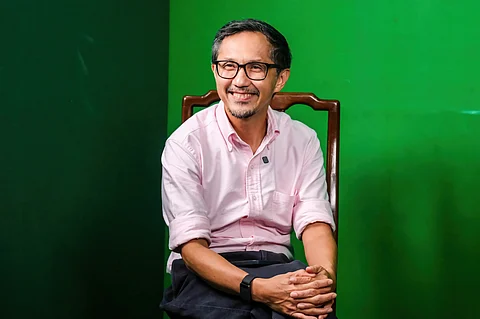
- NEWS
- the EDIT
- COMMENTARY
- BUSINESS
- LIFE
- SHOW
- ACTION
- GLOBAL GOALS
- SNAPS
- DYARYO TIRADA
- MORE

By Money staff
He’s always around. Transportation Secretary Vince Dizon wanted to show commitment through a hands-on and quick response approach.
Just over four months as head of the Department of Transportation, Dizon has introduced changes that indicate that profound changes are on the way in the mobility sector.
On 13 February 2025, President Ferdinand Marcos Jr. appointed Dizon as DoTr secretary, replacing Jaime Bautista, who resigned citing health reasons. Dizon took his oath of office before President Marcos on 21 February.
DoTr has become an active proponent of change through the projects that have been fast-tracked since Dizon’s assumption and his direct engagement with stakeholders.
On his first day as secretary, Dizon ordered the suspension of a proposed compulsory cashless payment system for toll roads, labeling it “anti-poor” and prioritizing commuter accessibility over policy shifts.
Shortly after, he directed the Land Transportation Office (LTO) to expedite the release of license plates for new vehicles within 72 hours, addressing a long-standing issue of delays that frustrated vehicle owners.
The move received strong public support and the new DoTr chief was praised as “progressive” for his quick action on pressing issues. Additionally, Dizon’s emphasis on active transport, such as promoting walkability and cyclist-friendly infrastructure through the Active Transportation Strategic Master Plan (ATSMP), underlined a vision for sustainable and inclusive mobility.
His call for civil society groups to provide feedback on pedestrian facilities further demonstrates a collaborative approach, aiming to integrate public input into policy design.
Dizon has prioritized several critical areas in his short tenure, focusing on infrastructure development, public transport improvements and operational efficiency.
Dizon inherited a portfolio of 69 out of 186 flagship projects under the Marcos administration’s “Build Better More” program, including high-profile initiatives like the Metro Manila Subway Project and the North-South Commuter Railway.
His marching orders from President Marcos emphasize expediting transport projects, including the fast-tracking of rail line extensions and interconnectivity for Light Rail Transit (LRT)-1, Metro Rail Transit (MRT)-3, and MRT-7 to alleviate Metro Manila’s traffic congestion.
For example, he announced the rebuilding of the main road artery, Epifanio de los Santos Avenue (EDSA), Metro Manila’s primary thoroughfare, initially scheduled for mid-June 2025, though this was later postponed as the President ordered a further review.
His focus on rail and road infrastructure aligns with his prior experience as president of the Bases Conversion and Development Authority, where he oversaw projects such as the Clark International Airport terminal and the New Clark City sports facilities.
Quick response man
Dizon has shown agility in addressing regional transportation challenges. In May 2025, he directed local officials in Eastern Visayas to operationalize the Amandayehan Port in Basey, Samar, within two weeks to mitigate logistics disruptions caused by load restrictions resulting from the rehabilitation of the San Juanico Bridge.
His recommendation to transfer the port’s management to the Philippine Ports Authority for sustained funding reflects strategic foresight in ensuring long-term operational stability.
To align the DoTr with his vision, Dizon requested courtesy resignations from undersecretaries, assistant secretaries and directors on 24 February 2025, signaling a desire for a “free hand” to implement his mandate. He also indicated plans to bring in experienced former transport officials to bolster leadership, acknowledging the complexity of managing the DoTr’s diverse sub-departments and attached agencies.
This shakeup, while bold, suggests a commitment to streamlining operations and addressing inefficiencies; however, it has raised concerns about continuity, given the resignation of key officials, such as Undersecretary for Railways Jeremy Regino.
A progressive shift in policy is Dizon’s advocacy for road safety over vehicular speed, and his focus on moving people rather than cars.
Another DoTr policy seen as giving more substance to inclusivity is urging local governments to prioritize transportation projects that reduce reliance on private vehicles and enhance urban livability.
